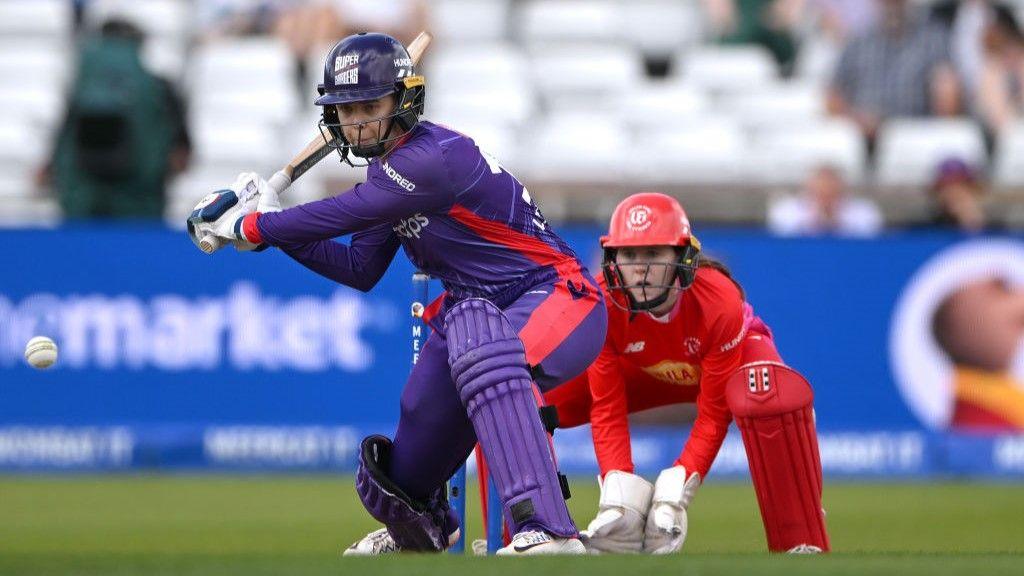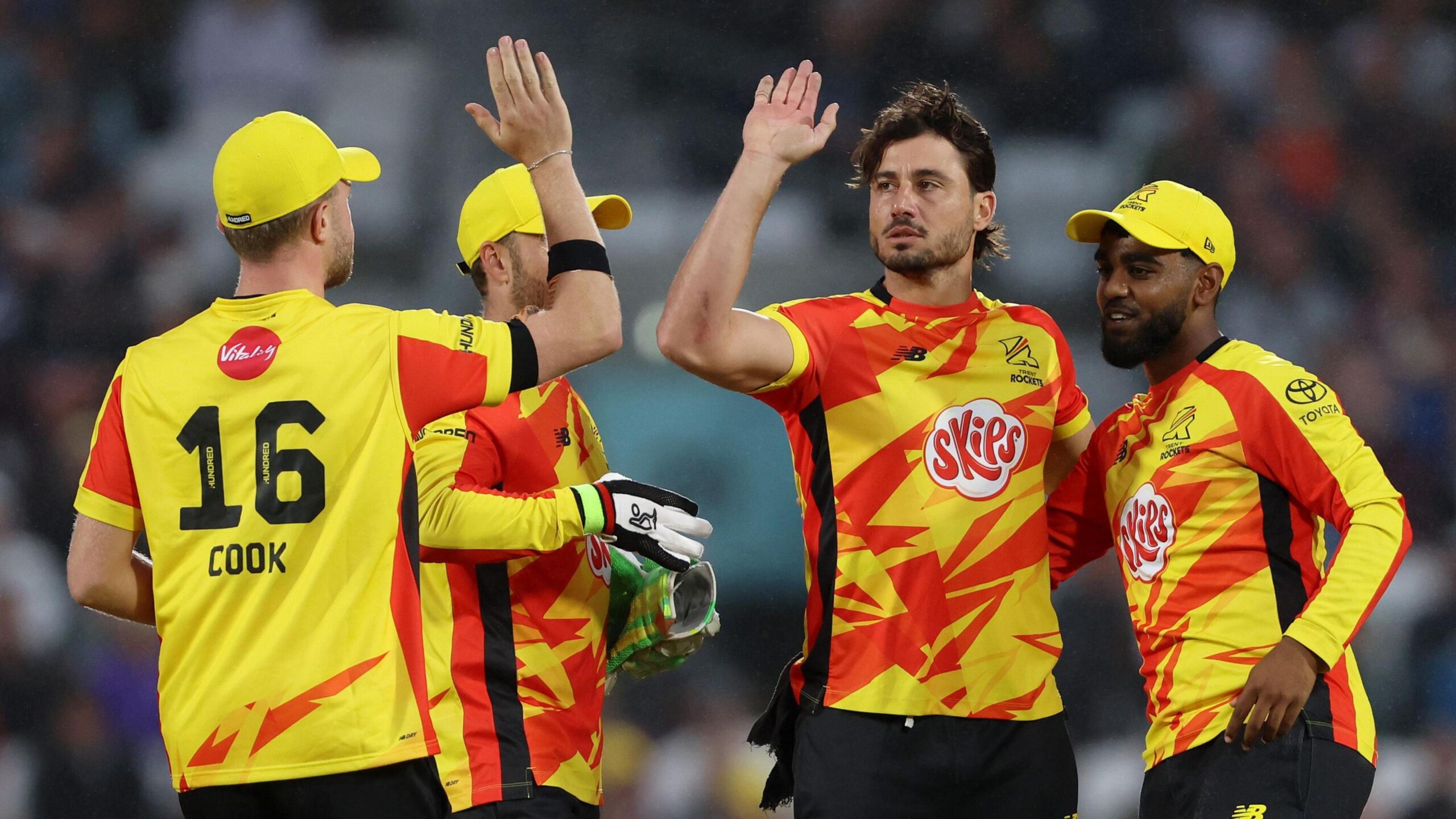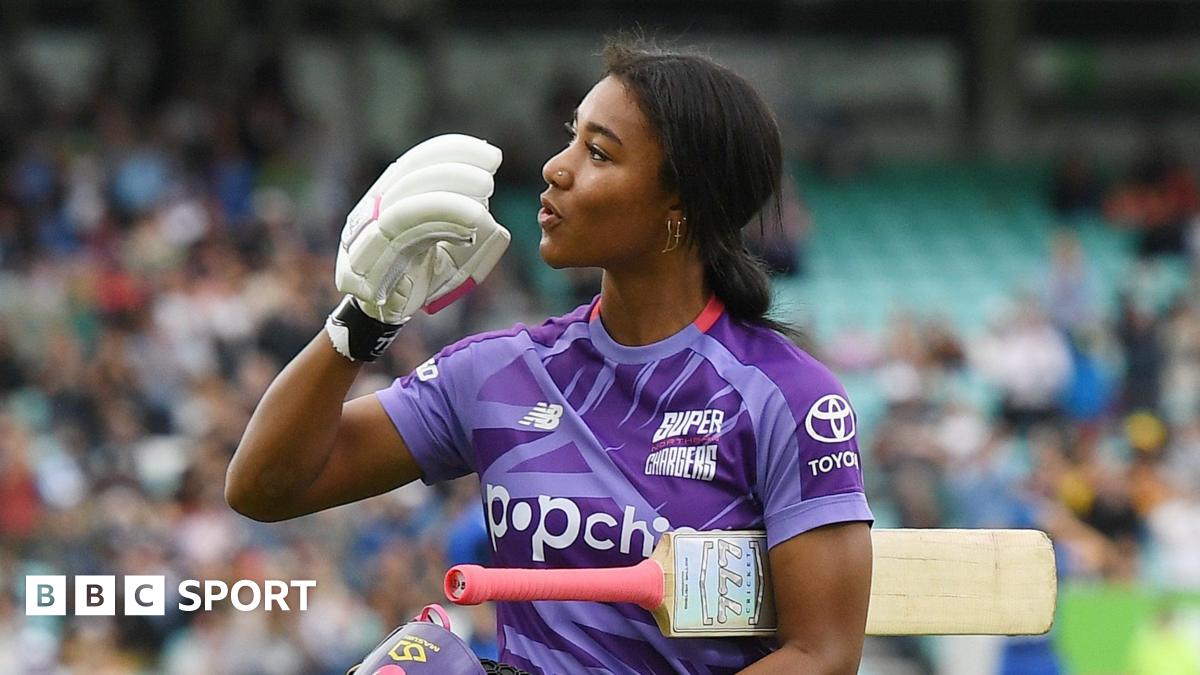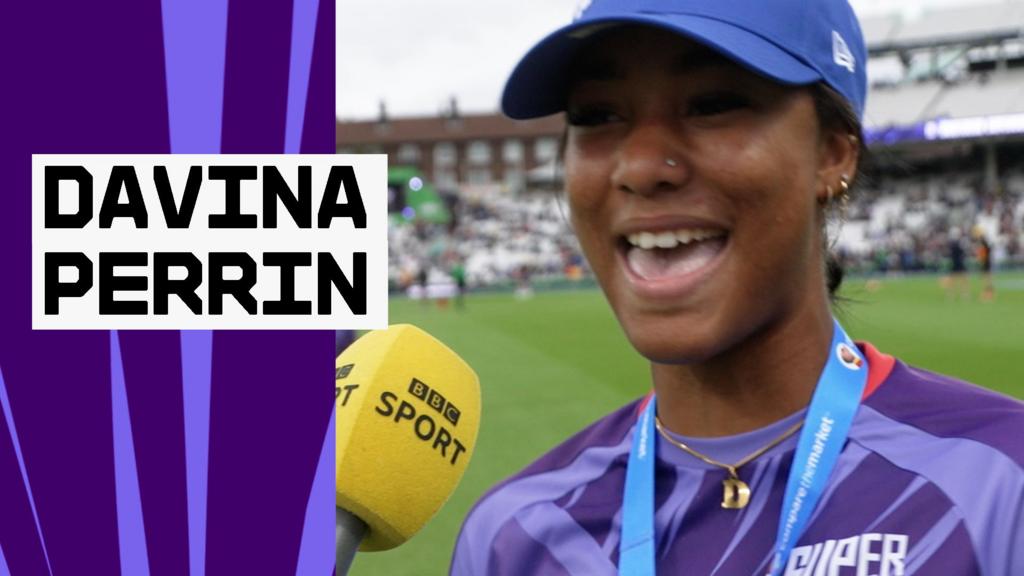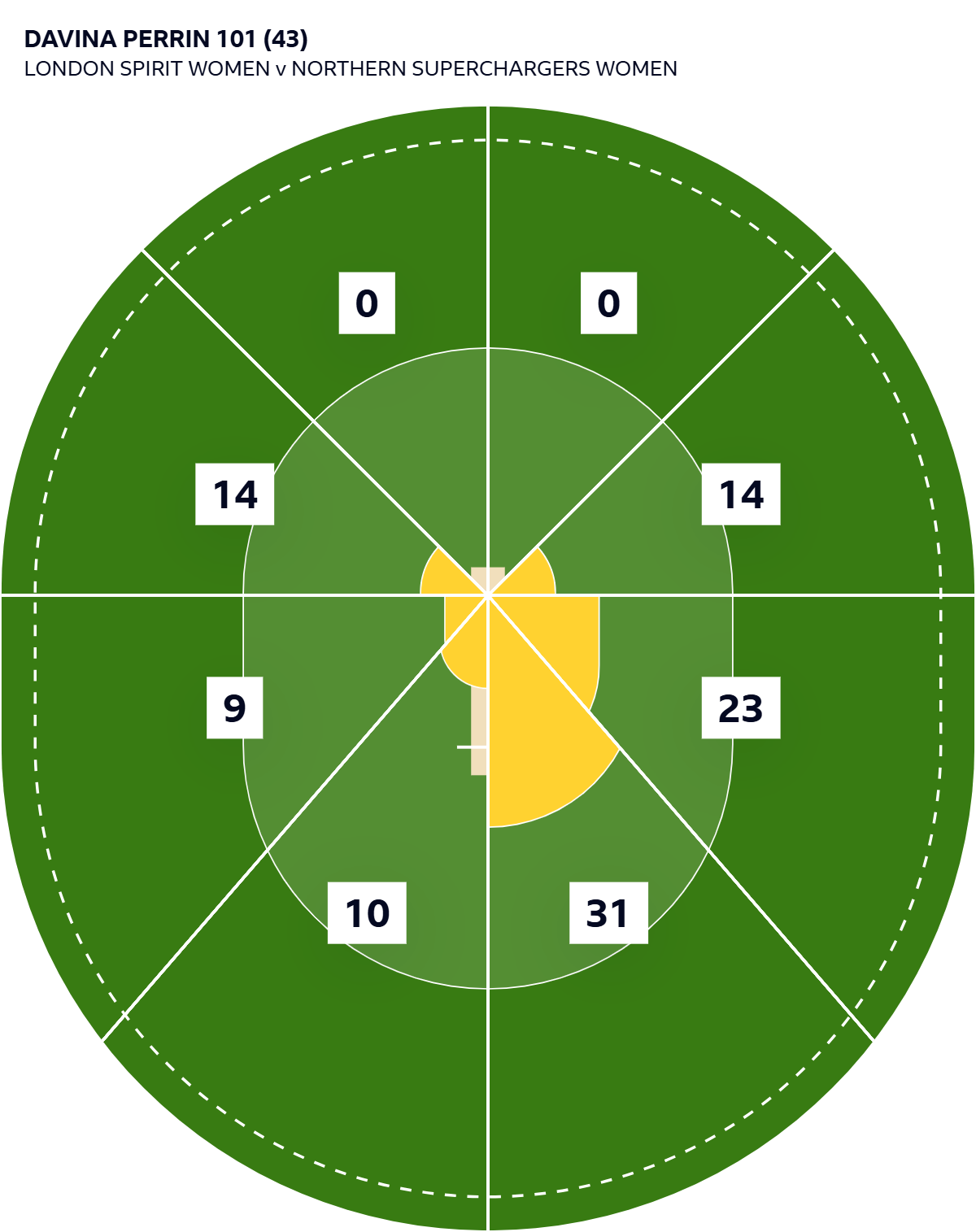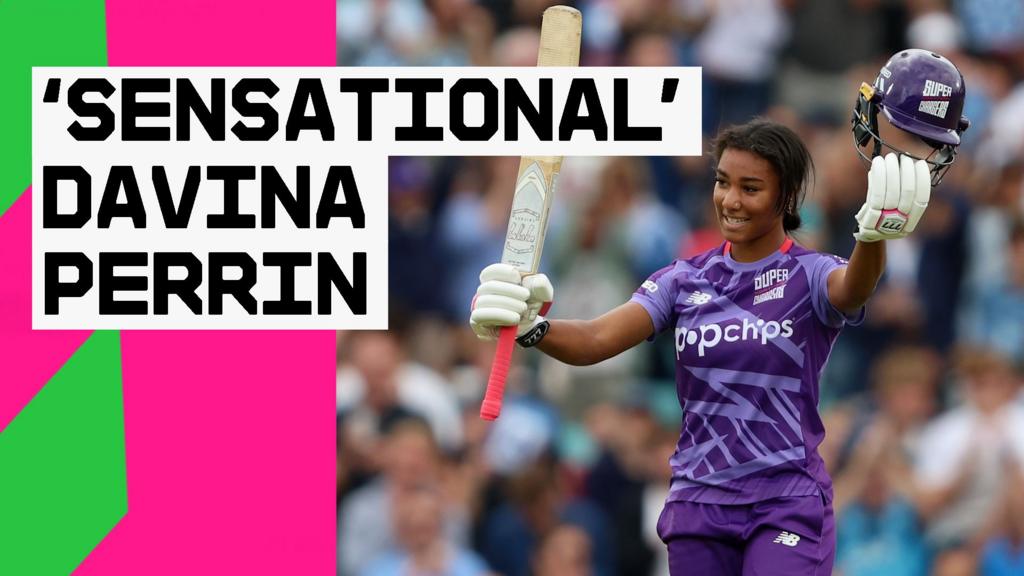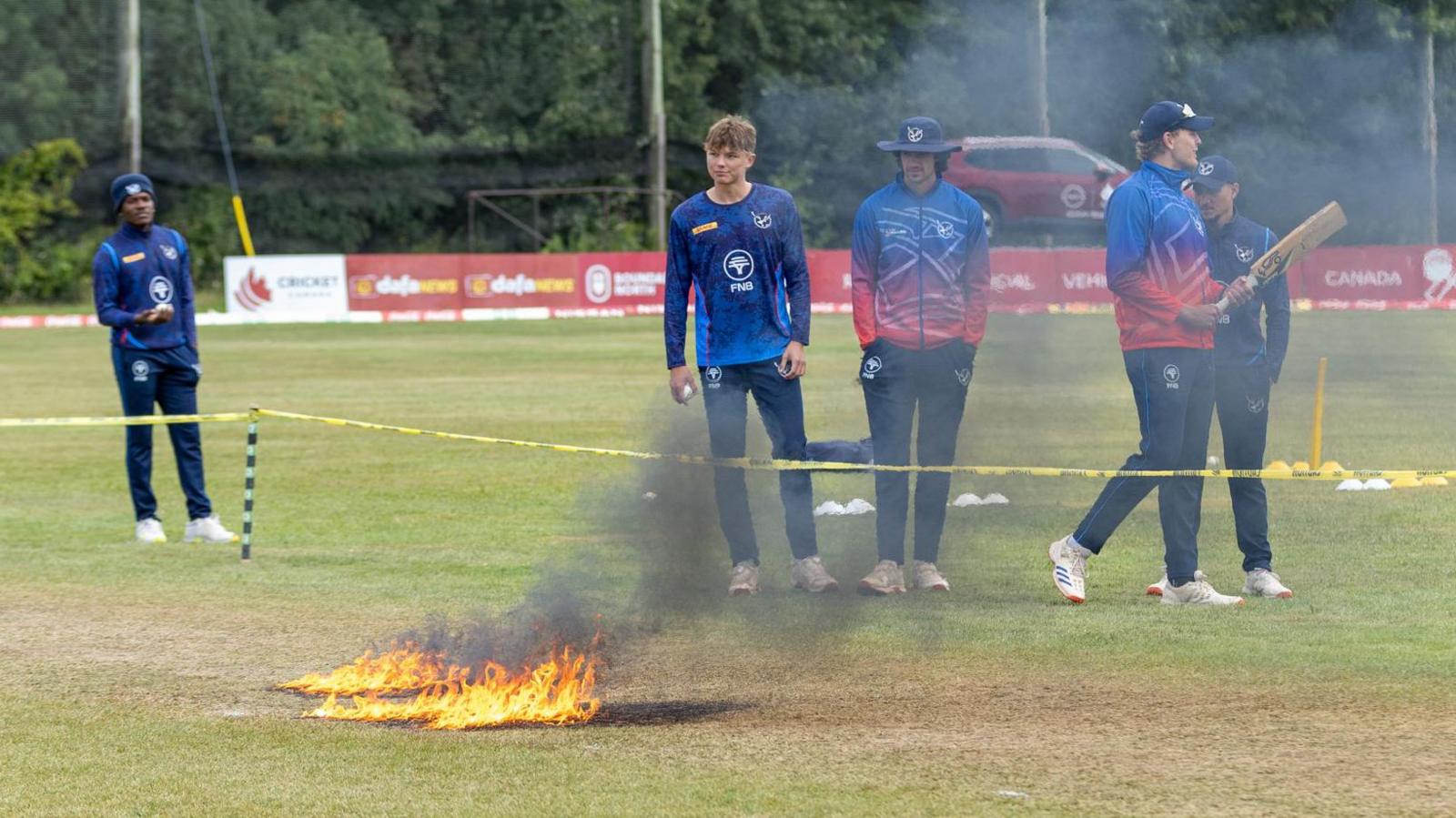-
37 minutes ago
Phoebe Litchfield thinks her days as an Australia youth hockey player help her when it comes to her trademark shot – one even she admits she may now be playing too often.
The shot in question is the switch hit – the ‘Litch switch’, if you will.
Left-hander Litchfield scores more runs when flipping to a right-handed stance and rotating her grip on the bat than any other player in the women’s game – and has continued to do so in this year’s Hundred for Northern Superchargers.
“That swing is quite familiar to me,” says the 22-year-old batter.
And the logic is simple.
To play this video you need to enable JavaScript in your browser.
This video can not be played
In a women’s T20 the fielding team is allowed four fielders outside of the 30-yard circle after the powerplay – one fewer than in the men’s game.
Captains do their best to protect the boundaries, usually with fielders deep in the leg side given most batters naturally target mid-wicket, so by switching Litchfield can hit towards a part of the ground that normally lacks protection.
“That is pretty much where my thinking is,” Litchfield says.
“That fifth gap – I am trying to reach it whether it is, left or right-handed. I back myself.”
The switch hit is, of course, nothing new.
Kevin Pietersen famously hit the great Muttiah Muralitharan for six in 2006 to bring the shot into the mainstream. Others say it was played much earlier than that.
David Warner and Glenn Maxwell, Litchfield’s fellow Australians, have been masters of it in the modern game.
1 of 2
What makes Litchfield unique, however, is her variety.
While the majority of her runs with the shot have come between third man and extra cover, as is the norm, 10% have come in ‘the V’ back down the ground.
No player – man or woman – can match that.
One stunning straight four back over the head of left-arm wrist-spinner Millie Taylor to seal a win against Birmingham Phoenix earlier in The Hundred was the perfect example.
“I practise it a lot in the nets,” Litchfield says.
“The practice was pretty much – OK, an [off-spinner] comes to bowl at me, and I’m going to try to switch hit you every ball. Work out what works and work out what doesn’t.
“I have dropped the bat a few times. I have got the grip wrong a few times.”
Litchfield admits it is a shot that is entirely premeditated.
Having made up her mind, she often makes her first move before the bowler has delivered the ball and then clears her left leg to give her as much access to the ball as possible.
In the Women’s Ashes at the Sydney Cricket Ground in January, Litchfield smashed England leg-spinner Sarah Glenn for six over extra cover with her switch hit.
When she plays the shot, Litchfield averages 47.0 at a strike-rate of 195. No batter with more than 100 runs from switch hits has a strike-rate higher than Litchfield’s.
She has carried that form into The Hundred by striking fours with supreme regularity, and occasionally knocking singles.
On Saturday came the rarest of incidents – a top-edged switch hit and subsequent dismissal.
“It can get me in trouble if I have picked the wrong ball,” she says.
“The biggest thing I have learned is to know how to bail out if it is a good ball, just to block it.
“I probably could have done that [on Saturday] in hindsight, but hindsight is there for a reason.
“It is important to know how to get off strike if the ball isn’t in your zone.”
Northern Superchargers face London Spirit in The Hundred women’s Eliminator at The Kia Oval at 14:15 BST on Saturday, with live text and radio coverage on BBC Sport.

